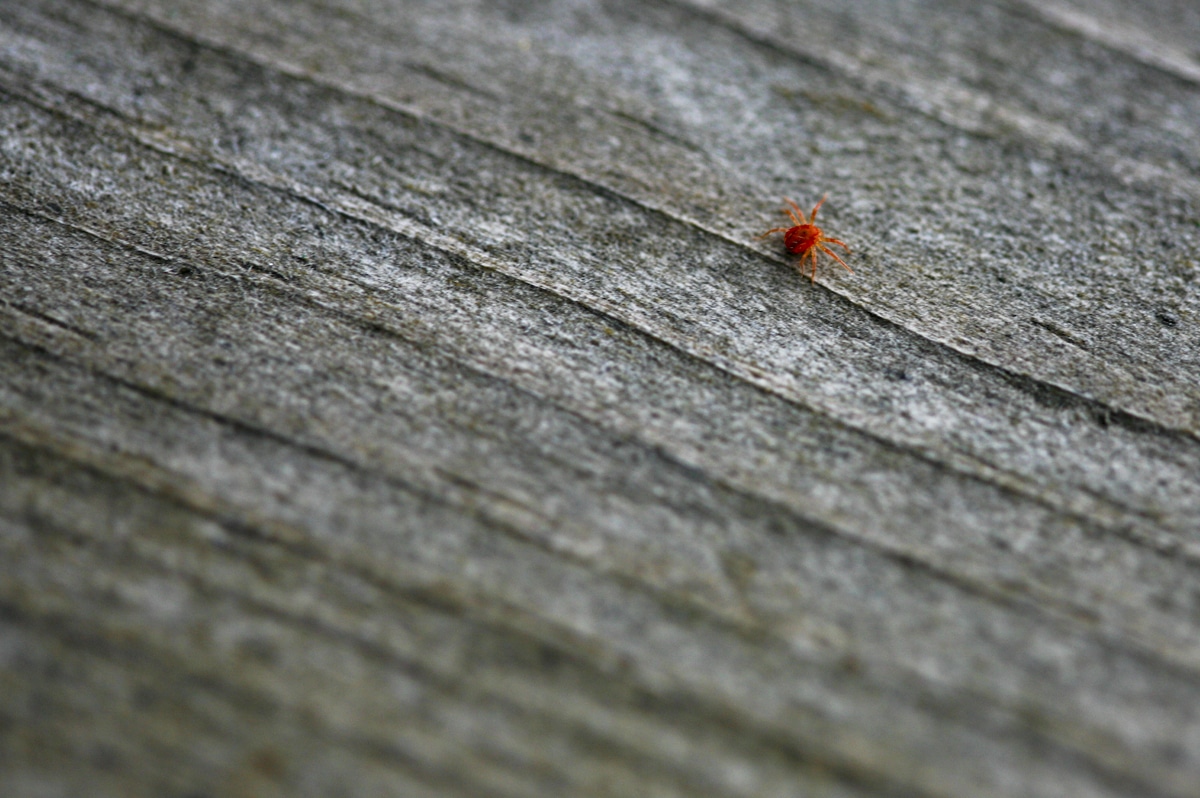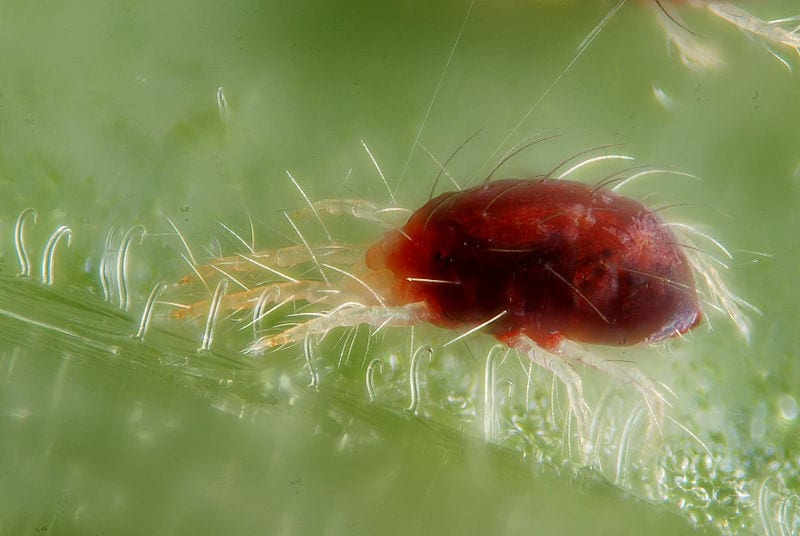
There are several pests that can affect plants, such as when we have the red spider at home. Also known as Tetranychus cinnabarinus, This spider is really a mite that stands out for having a sucking mouthpart with which attacks the leaves of vegetables and weakens them. It is very easy to reproduce and is not usually seen with the naked eye. Among the crops most affected by spider mites are basil, celery, zucchini, pea, green bean, melon, cucumber, watermelon, tomato and carrot.
We can usually find the spider mite at home when the weather is dry. To detect this mite we must look at whether there is any silky tissue or spider web near the plants. In such a case, it is time to remedy it. Fortunately there are a number of natural remedies that will help us save our crops.
Where is the spider mite found?

Before focusing on how to combat red spider mites at home, we are going to discuss a little where we can find this type of mite. Usually, the attacks appear by spotlights. They are more frequent near weeds, especially mallow and bindweed. These fulfill the function of reservoirs of the pest.
Regarding the affected plants, the Red spider it is usually located on the young leaves belonging to the last shoots. However, when the attacks are strong It can appear on any type of leaf and even on other parts of the plant. Once the food source of this mite begins to run out, the spider mite disperses creating a web of silk tissues. In this way, it looks for other guests that adapt to its needs or takes refuge in suitable places to enter diapause. Other means of dispersal of these mites are the transport of plant material and the wind.
What harm does the spider mite cause?
As we have already mentioned previously, the spider mite weakens the plant by attacking its leaves. In order to feed, it tears tissues superficially. Thus they end up emptying and penetrating the air, so tissues take on a whitish appearance initially, turning to reddish tones afterwards.
Due to the increase in perspiration and the decrease in the capacity of the plant to carry out photosynthesis, this decreases its production and promotes the loss of the quality of the fiber, which implies its length, its resistance, etc. Definitely: The affected vegetable loses energy.
How to eliminate the spider mite at home?

Since the damage caused by this mite on plants is important, it is essential to solve the problem of this plague. Luckily there are several home remedies that allow us to eliminate the spider mite at home. If we do not have to resort to chemicals, it will be better for our crops, the ecosystem and the animals that may come into contact. We are going to discuss the different options that we have below.

Horse tail
There is a plant called Equisetum arvense, also known as horsetail, which can help us fight red spider mites. We must use the entire plant, except for the root. When the horsetail is fresh, we must use 150 grams per liter, while in the dry state we must use 20 grams per liter. The idea is to leave it to soak overnight, at least twelve hours. The next day we boil a third. When it's ready, we can use this remedy to both prevent and treat the plague.
If our intention is to prevent the appearance of the spider mite at home, we must regularly spray this compound on the plants, every 10 to 15 days approximately. On the other hand, if we have already detected this mite in our crop, the ideal is to spray on the vegetables in full sun for three consecutive days.
Nettle slurry
Flour preparation
Sprinkle with sulfur
I hope these methods have helped you fight spider mites at home. Remember that there are many diseases and pests that can affect our crops and plants. In order to be able to treat them correctly and not harm the vegetables too much, it is important to detect what it is about in time.
